40 what are calories on food labels
Learn How the Nutrition Facts Label Can Help You Improve ... Keep your intake of added sugars to less than 10% of your total daily calories. That means if you consume 2,000 calories in a day, added sugars should account for no more than 200 calories. Read the Nutrition Facts labels on your packaged food and drinks to keep track of sugars, fats, protein, and other nutrients. Food Label Claims: What You Can and Can't Trust Calories. This number is per serving. If you're inactive, small, female, or older, you may not need the default 2,000 calories per day. You can eat smaller servings to lower your calories. Labels...
Reading Food Labels: "Calories From Fat" | livestrong The term "calories from fat" refers to the percentage of calories in a serving of food that come from fat rather than from carbohydrates or protein. This figure is listed on nutrition labels for most foods. This amazing kale pesto is only 210 calories and anti-oxidant rich! The percentage of calories a person gets from fat versus carbohydrates ...

What are calories on food labels
How to Read a Nutrition Label - WebMD The label says one serving is 200 calories. The catch is that's for "one pastry." Label reading is easy when a package states there are one or two servings. It's the fractions that will send you to... Food Labels: Fat & Cholesterol | Home & Garden Information ... The label does the math for you, putting all the numbers on the same scale of 0-100% DV for the day. These percentages are based on a 2,000-calorie daily diet, which is average for someone who is moderately active. Your daily values may be higher or lower depending on your calorie needs. The % DV column does not add up vertically to 100%. Understanding Food Labels | The Nutrition Source | Harvard ... One might assume the small bag to contain 1 serving, but it actually contains 3 servings so that eating the whole bag provides 300 calories. With the updated label, the same size bag would show 1 serving at 300 calories. Keep in mind that the serving size is not a recommendation for everyone about how much to eat, but rather a reference point.
What are calories on food labels. Calories for Hundreds of Foods: Your Calorie Chart Database Soups are often low in calories, but check the label since any foods can be included. Nuts & Legumes Calories Legumes Beans and other legumes are nutritional foods with calories from carbs, fat, and protein. Nuts & Seeds Nuts and seeds are high in fat and therefore calorie dense, but they are very nutritious. Oils & Fats Calories Oils & Fats Why Calorie Labels Are Sometimes Inaccurate For example, while the U.S. FDA requires that food products include calorie labels, the agency also allows for a 20% margin of error, which means that some foods are actually higher in calories ... Understanding Ingredients on Food Labels | American Heart ... Food labels are an important source of information about calories and the nutritional value of the foods you eat, a crucial tool in building a heart-healthy diet. Are the Calorie Counts on Food Labels Accurate? | Discover ... A 2013 study on the food label accuracy of snack foods found that their average caloric content was more than 4 percent higher than the calories listed. The researchers suggest this was because the foods contained more carbohydrates than listed. Beyond that, the counts on labels can be inaccurate for other reasons, too.
Why most food labels are wrong about calories Food labels say how many calories a food contains. But what they don't say is that how many calories you actually get out of your food depends on how highly processed it is. Raw versus cooked -... The Science Behind Calories and Nutrition Facts Labels ... The calorie number we see on food labels refers to a kilocalorie (kcal), which is also known as a large calorie or a food calorie. A kilocalorie is 1 000 calories. A kilocalorie is 1 000 calories. One kilocalorie is the amount of energy it takes to heat one kilogram of water one degree Celsius at sea level. How Do They Calculate Calories on Food Labels? - Food and ... 22 grams of carbohydrate (22 x 4 = 88 calories) 2 grams of protein (2 x 4 = 8) ...should contain approximately 140 calories. It's important to recognize that 4-9-4 is an average, and not an exact amount. For example, 1 gram of fat in one food may yield 8.34 calories while 1 gram of fat from another food yields 9.7 calories. Food Labels (for Teens) - Nemours KidsHealth The information on food labels is based on an average adult diet of 2,000 calories per day. The actual number of calories and nutrients that kids need will depend on their age, weight, gender, and level of physical activity. (For more guidance, check out the USDA's MyPlate .) Fat Total fat shows how much fat is in a single serving of food.
Food Labels | CDC If you eat the whole thing, you are eating 8 times the amount of calories, carbs, fat, etc., shown on the label. Total Carbohydrate shows you types of carbs in the food, including sugar and fiber. Choose foods with more fiber, vitamins, and minerals. Choose foods with lower calories, saturated fat, sodium, and added sugars. Avoid trans fat. How to Understand and Use the Nutrition Facts Label | FDA That is two times the calories and nutrients shown in the sample label, so you would need to double the nutrient and calorie amounts, as well as the %DVs, to see what you are getting in two... Figuring Out Food Labels (for Kids) - Nemours KidsHealth The information on food labels is based on an average adult diet of 2,000 calories per day. The actual number of calories and nutrients that kids need will depend on their age, weight, gender, and level of physical activity. (For more guidance, check out the USDA's MyPlate .) Comparing Labels Why Do Food Labels Use Calories Instead of Joules or ... A kilocalorie equals 1,000 "small" calories, which is the energy it takes to raise the temperature in 1 gram of water 1 degree Celsius. On U.S. food labels, the term "calorie" actually means kilocalorie, though a calorie is technically the smaller measurement.
Food Labels 101: Understanding the Nutrition Facts Label ... Nutrition labels are based on a daily 2,000 calorie diet. Depending on your age, gender and activity level, you may need to consume more or less than 2,000 calories per day, so keep this in mind when viewing each label. Now let's take a look at the parts of the nutrition facts label and break it all down. Anatomy of a Nutrition Facts Label
How to understand food labels - Eat For Health Nutrition content claims. Sometimes labels will include nutrition content claims like 'low fat', 'reduced salt' or 'high fibre'. These claims can only be used if the food meets certain criteria. For example, with a 'good source of calcium' claim, the food must contain more than a set amount of calcium.
Nutrition Labels 101: What's Required? What's Optional ... The cholesterol listing on nutrition labels notes the cholesterol content of the food per serving in milligrams rounded to 5 mg increments. If the amount of cholesterol contained is less than 2 milligrams per serving, it can be stated as zero in the nutrition fact panel, or replaced with the statement "Not a significant source of cholesterol ...
Calories on the New Nutrition Facts Label | FDA For example, if you ate one serving of the food shown on the label below, you would be eating 220 calories. And two servings would be 440 calories. The terms "fat-free" and "no added sugars" do not...
Understanding Food Nutrition Labels | American Heart ... Remember that the information shown in the label is based on a diet of 2,000 calories a day. You may need less or more than 2,000 calories depending upon your age, gender, activity level, and whether you're trying to lose, gain or maintain your weight.
The Big Reveal: What's Behind Nutrition Labels? - American ... He found that carbohydrates and proteins were worth 4 Calories per gram and fats about 9 Calories per gram. This 4-9-4 system is how labels are determined today. In some cases, dietary fiber is subtracted from the total carbohydrate count because it is assumed that it provides no nutritional calories.
What the Labels Mean - Calorie Control Council Food and Drug Administration (FDA) food labeling regulations require that essentially all food labels provide nutrition information to help consumers make informed food choices. The regulations have a significant impact on low-calorie, low-fat and "light" foods and beverages which are so popular today.
The Basics of the Nutrition Facts Label You know about calories, but it also is important to know about the additional nutrients on the Nutrition Facts label. Protein: A percentage Daily Value for protein is not required on the label. Eat moderate portions of lean meat, poultry, fish, eggs, low-fat milk, yogurt and cheese, plus beans and peas, nuts, seeds and soy products.
Food Labels - Nutrition.gov Food labels can help you make healthy choices when buying food in grocery stores or restaurants. Labeling Organic Products. USDA, Agricultural Marketing Service, National Organic Program. Learn about organic foods, requirements, and how they are labeled. Calories on the Menu. HHS, ...
How To Read Food and Beverage Labels | National Institute ... Or you can call the U.S. Department of Agriculture's Food and Nutrition Information Center at 301-504-5414. Understanding percent Daily Value (% DV) The percent Daily Value (% DV) tells how much a nutrient in a serving of the food or beverage contributes to a total daily 2,000-calorie diet.
Understanding Food Labels | The Nutrition Source | Harvard ... One might assume the small bag to contain 1 serving, but it actually contains 3 servings so that eating the whole bag provides 300 calories. With the updated label, the same size bag would show 1 serving at 300 calories. Keep in mind that the serving size is not a recommendation for everyone about how much to eat, but rather a reference point.
Food Labels: Fat & Cholesterol | Home & Garden Information ... The label does the math for you, putting all the numbers on the same scale of 0-100% DV for the day. These percentages are based on a 2,000-calorie daily diet, which is average for someone who is moderately active. Your daily values may be higher or lower depending on your calorie needs. The % DV column does not add up vertically to 100%.
How to Read a Nutrition Label - WebMD The label says one serving is 200 calories. The catch is that's for "one pastry." Label reading is easy when a package states there are one or two servings. It's the fractions that will send you to...

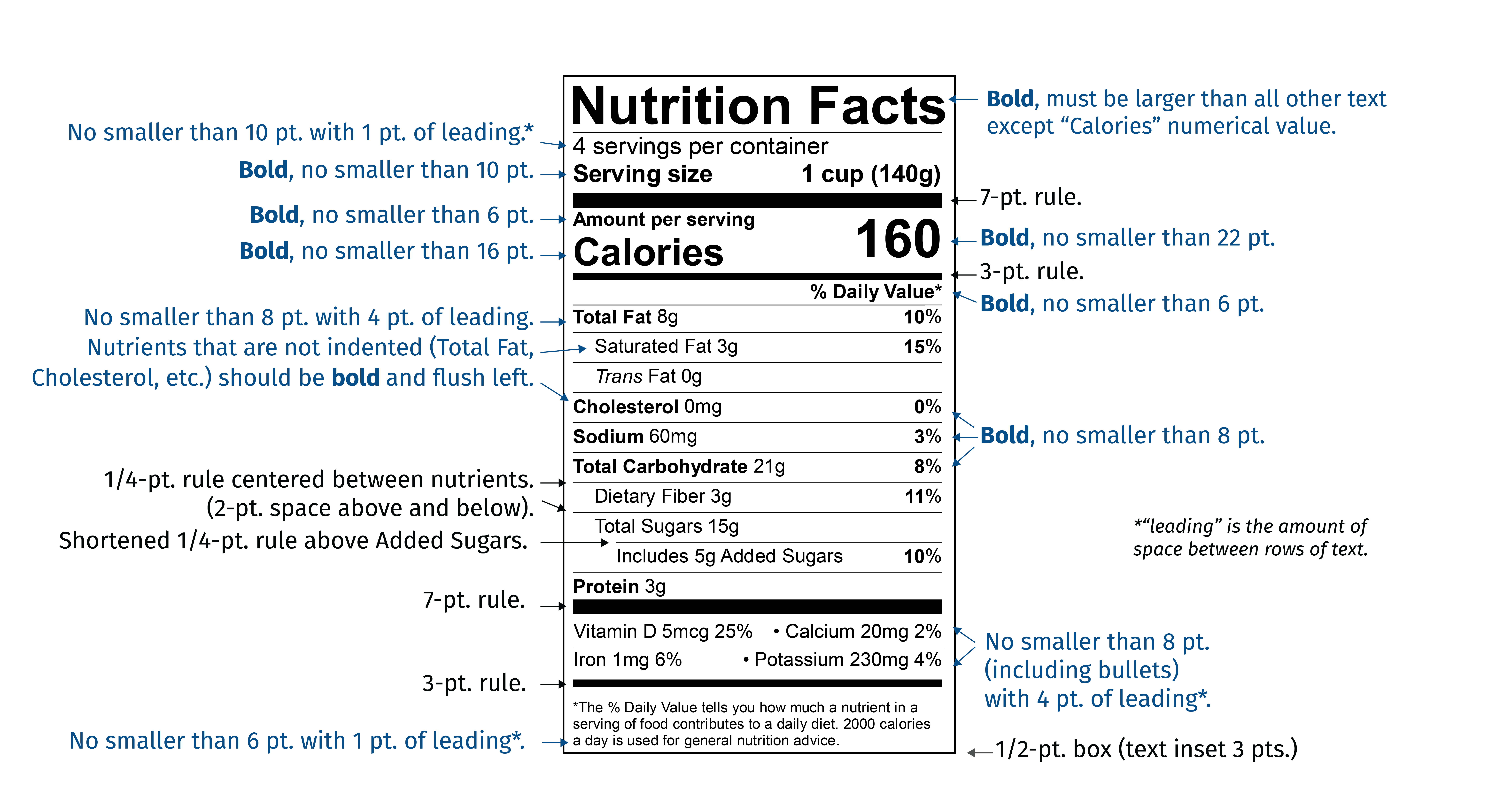


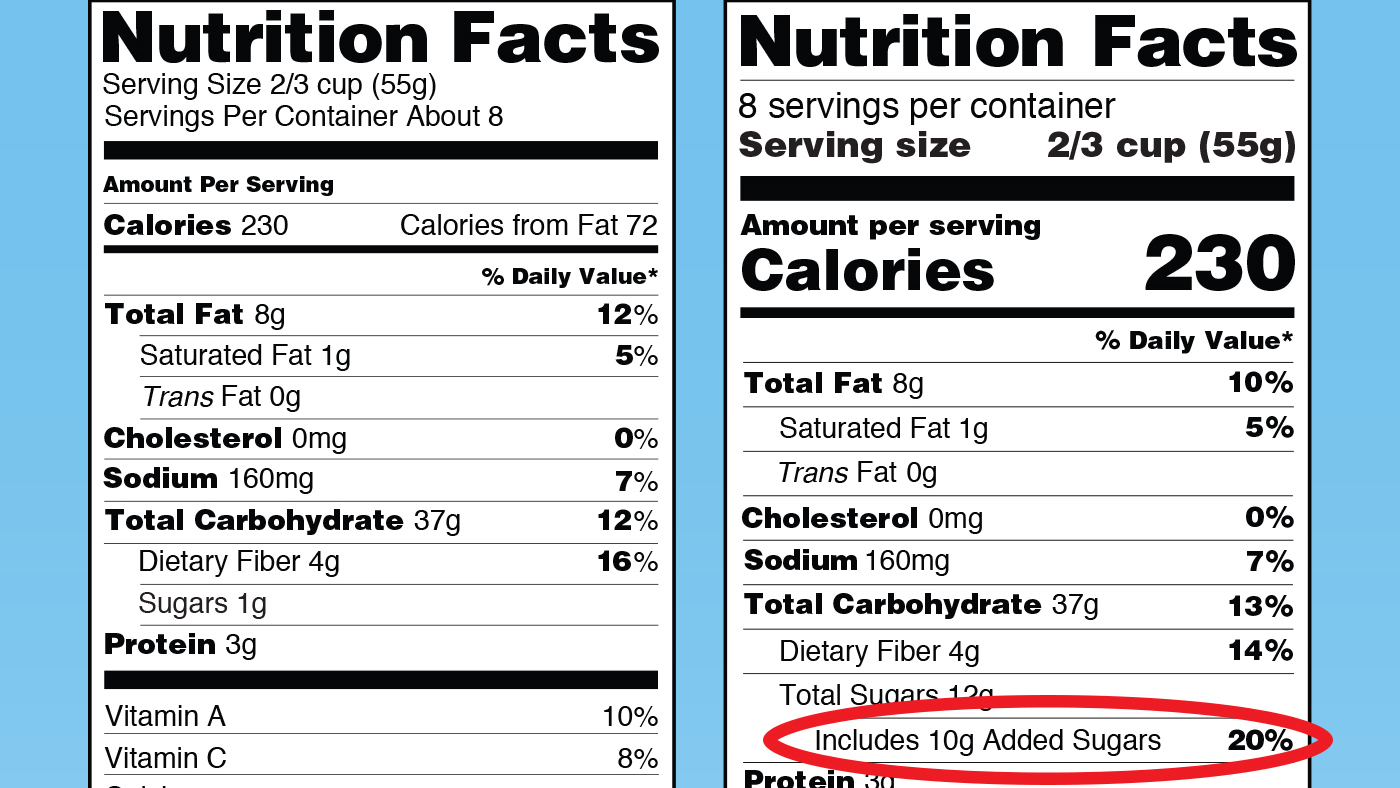


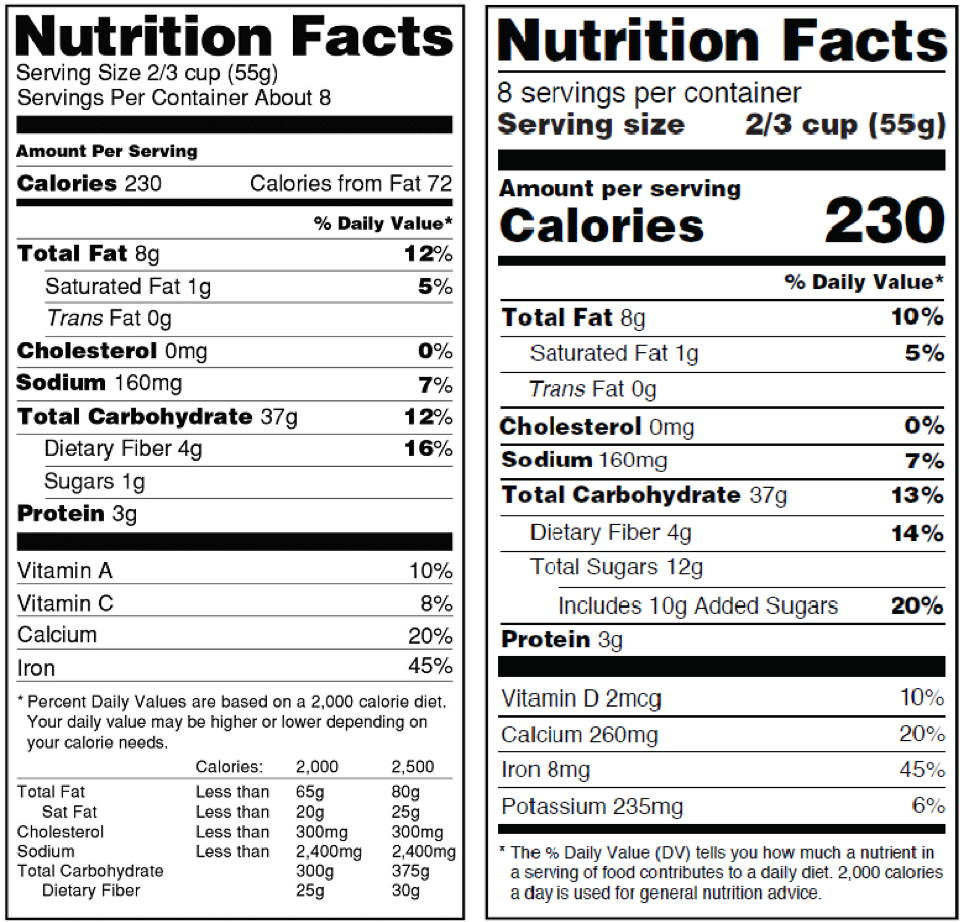










:max_bytes(150000):strip_icc()/Untitled-design-5753677f5f9b5892e8d7d171.jpg)



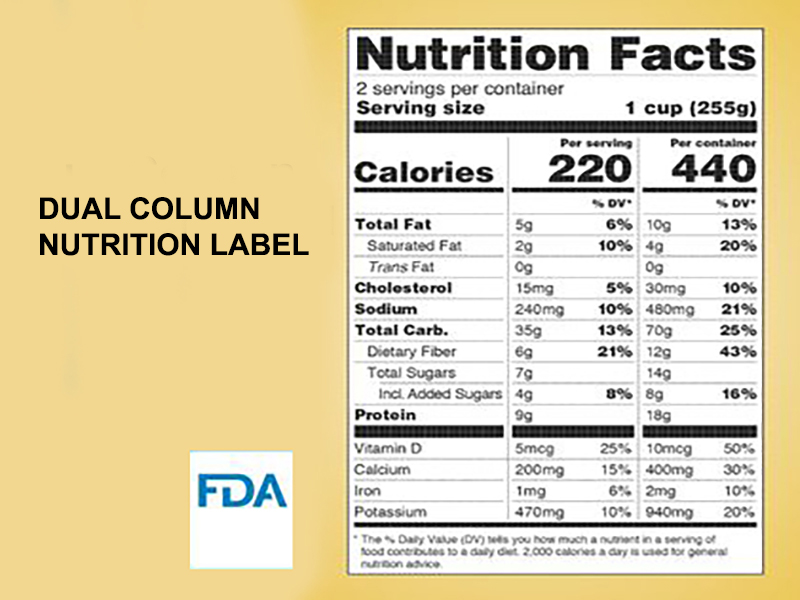
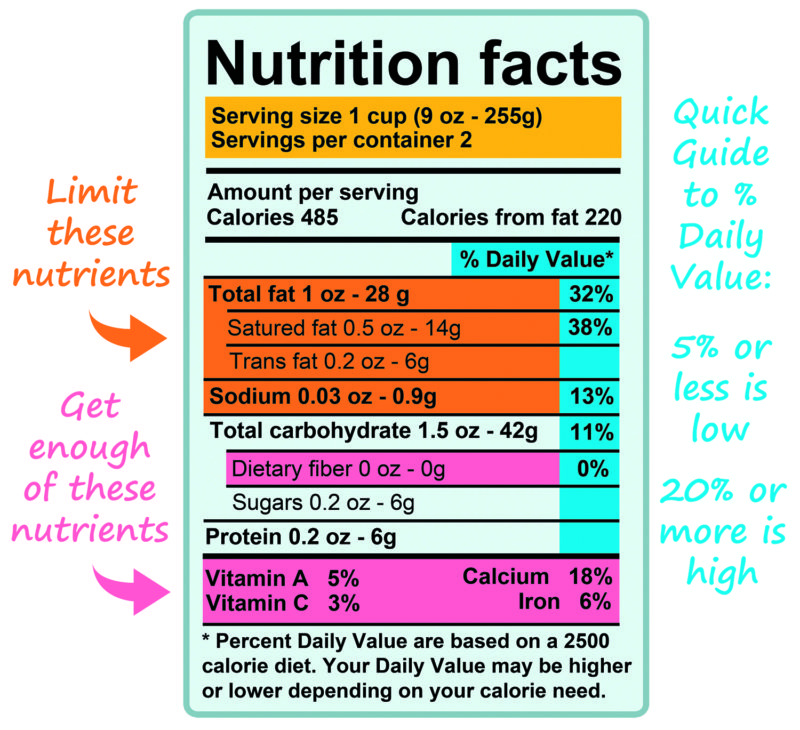
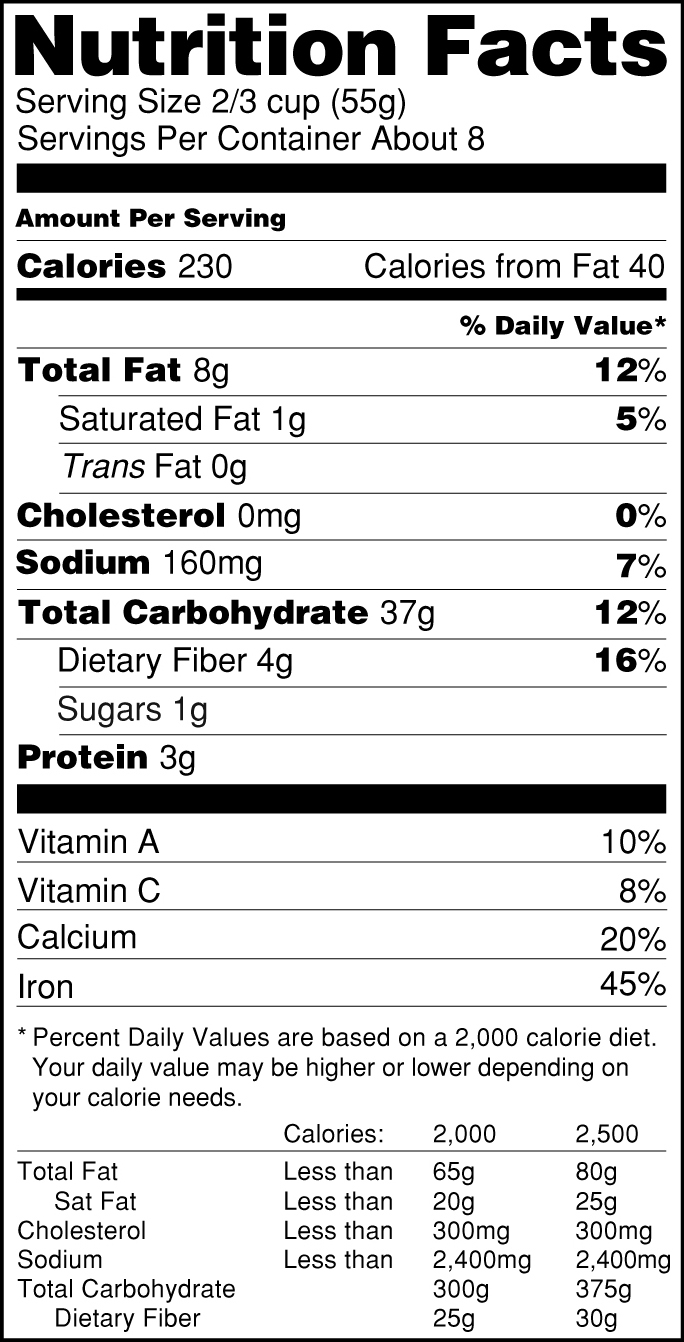
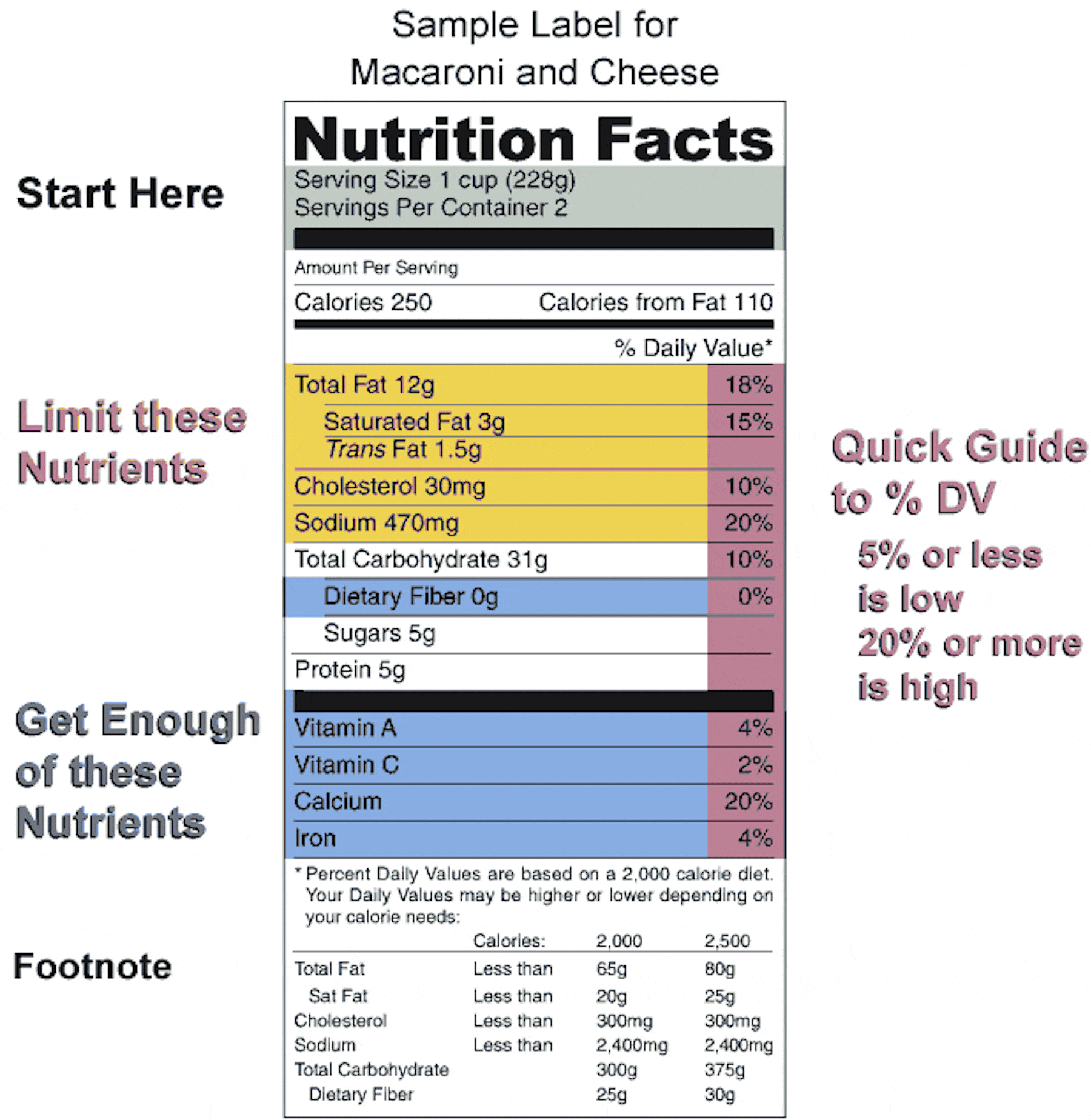
Post a Comment for "40 what are calories on food labels"